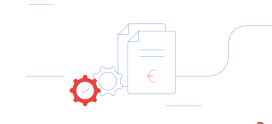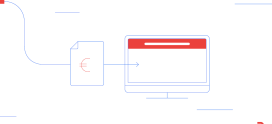18. January 2021
Sustainable digital – a contradiction in terms? (Part 1)

Everyone is talking about becoming more digital. And about living and working more sustainably now. But combining digitization and sustainability sounds more like a well-intentioned attempt than an effective symbiosis. So what is it about digital living that is supposed to help us achieve greater sustainability?
A small disclaimer on the side: surfing the World Wide Web and watching funny videos at the breakfast table blows a lot of CO2 into our atmosphere. In Germany alone, we cause as much CO2 emissions as the whole of Croatia – about 24 tons of CO2 per year. The reason for this is obvious: When we stream one of our favorite series again, it has to come to us somehow. And the journey from the servers of the data centers to our end devices is a tough one: there were around 50,000 data centers in Germany alone in 2016. All together, they consumed around ten terawatt hours of energy annually. In this country, that’s roughly a total electricity demand of two percent. And that’s enough to supply Berlin with energy for an entire year. Phew, that’s quite a lot!
But how does it look today, some five years later? Of course, we still consume quite a bit of electricity while we meet virtually with colleagues and customers for a meeting and chase our data through the server landscape of this world. Nevertheless, there is one significant difference from back then: we are becoming more and more aware of what an enormous energy guzzler the Internet is, and this seems to be gradually triggering a rethink in the minds of society and our politicians as well.
Germany wants to become climate-neutral by 2050. The business community sees room for improvement. According to a survey by Bitkom, one in two companies is aiming to achieve the climate target by 2030. Too ambitious? Hardly. For one thing, many clever minds have already been working for several years to achieve our environmental and climate targets with clever innovations – almost half of which can already be achieved through digital technologies. On the other hand, Corona in particular showed us that it is not that difficult to still significantly reduce our carbon footprint in many areas despite our use of the Internet. For example, 57 percent of the companies surveyed in the course of Covid-19 have unceremoniously implemented cloud solutions in their company.
Cloud turns out to be a driver of digitization
It is not just since the pandemic that the cloud has been in the fast lane. It has made it possible to monitor and work on workflows, processes and services in a mobile and flexible way. The Cloud Monitor 2020 confirms that we appreciate this simple and uncomplicated access to our data and no longer want to do without it. 76 percent of German companies have already made themselves comfortable in the cloud. This year’s Digital Office Index from Bitkom also confirms this trend: in 2019, 87 percent of German companies were open-minded about digitization. That is an increase of 13 percentage points compared to the previous year.
But even beyond cloud computing, there are many more digital solutions with which digitization has a lasting effect, because complex processes that would not be possible without the use of a ‘computer brain’ are suddenly made possible. We may not yet have arrived at our goal of living and working in a climate-neutral way, but we are on a very good path towards it. In part two of our series on digitization and sustainability, you can find out what measures the business community is taking to get ahead of the politicians when it comes to climate neutrality.



